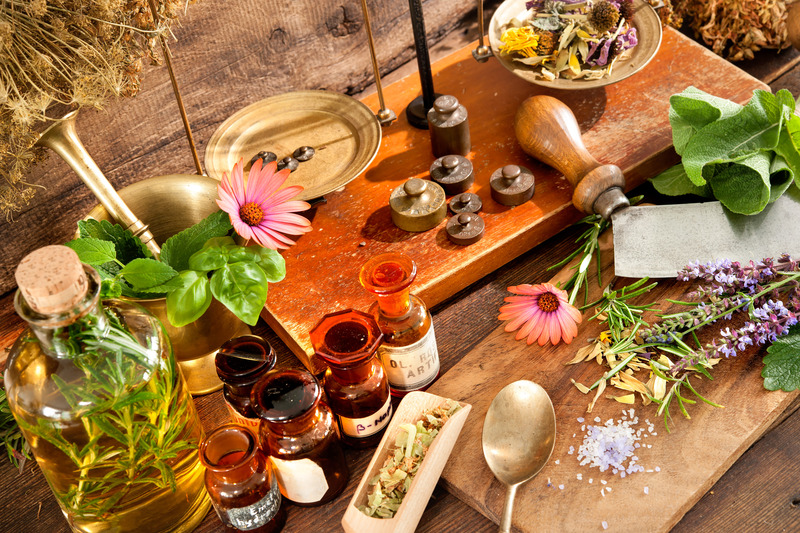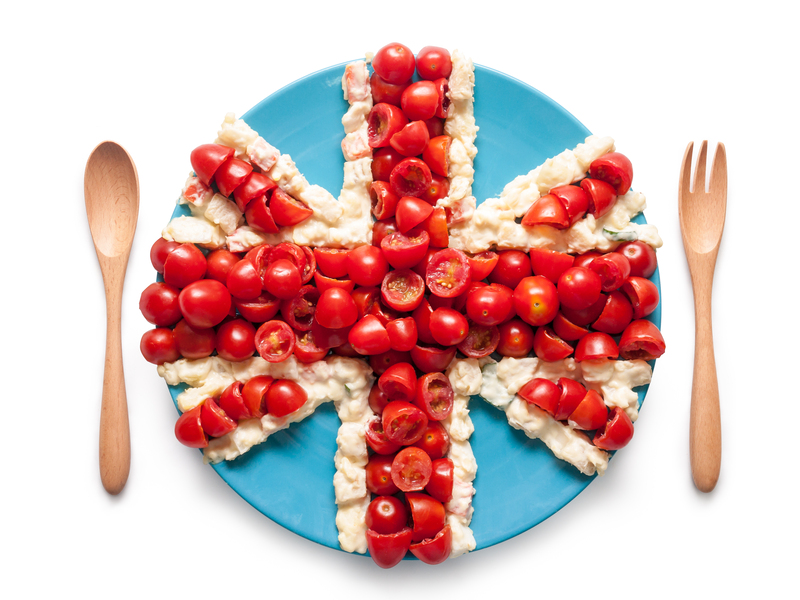Creating Visual Harmony with Crafted Hedge Designs
Posted on 07/09/2025
Creating Visual Harmony with Crafted Hedge Designs
Hedges are far more than simple borders or living fences. In modern landscaping, crafted hedge designs are an essential tool for establishing visual harmony, defining space, and enhancing the aesthetic appeal of gardens and outdoor environments. Creating visual harmony with hedge designs requires a blend of artistic sensibility and practical horticultural know-how. In this comprehensive guide, we explore how you can transform your landscape using carefully crafted hedges, the principles behind their arrangement, and the best plants and techniques to achieve beautiful, lasting results.

Why Visual Harmony Matters in Garden Design
Visual harmony is the desirable balance and pleasing arrangement of elements within a space. In gardens, it brings together different shapes, colors, forms, and textures, making the outdoor environment feel cohesive, tranquil, and inviting. Crafted hedge designs play a crucial role in achieving this effect; their structured forms provide rhythm, contrast, and order amid the natural exuberance of other plantings.
- Defines Spaces: Hedges can serve as living walls, screening privacy areas from open lawns.
- Guides Movement: Thoughtfully designed hedges direct the viewer's gaze or movement through the landscape.
- Enhances Aesthetics: Structured green outlines bring sophistication and elegance to any setting.
The Principles Behind Crafted Hedge Designs
To create visual unity with hedge designs, one must adhere to several key landscape design principles:
- Balance: Achieved by arranging hedges symmetrically or asymmetrically to evoke stability or dynamic movement respectively.
- Proportion: Recognizing the relative size of hedges compared to buildings, pathways, and other landscape features.
- Rhythm: Using repetition or spacing in your hedge design to lead the eye naturally through the garden.
- Unity: Selecting hedge plants, shapes, and colors that create a sense of oneness across the space.
- Contrast: Pairing different textures or shades of green for added visual interest without disrupting harmony.
Types of Crafted Hedge Designs for Visual Harmony
There are many creative ways to use hedges as the backbone of landscape harmony. Here are some popular hedge design variations:
1. Formal Hedges
Formal hedges are sheared into crisp, sharply defined forms--rectangular, square, or rounded. These hedges, often found in classical and European-style gardens, project order and symmetry, enhancing the garden's sense of calm and structure. They provide a unifying visual element that can balance more free-form plantings elsewhere.
- Best for: Entranceways, parterres, symmetrical gardens, pathways.
- Common plants: Boxwood (Buxus), Privet (Ligustrum), Yew (Taxus), Holly (Ilex).
2. Informal or Naturalistic Hedges
Informal hedges are allowed to grow more loosely, trimmed just enough to maintain neatness but displaying their natural shape. These hedges blend seamlessly into informal gardens or contemporary landscapes, adding soft texture and movement while still defining space.
- Best for: Cottage gardens, wildlife-friendly spaces, borders.
- Common plants: Laurel (Prunus laurocerasus), Viburnum, Abelia, Spirea.
3. Layered and Multi-Tiered Hedges
Layered hedge designs create depth and harmony by grouping plants of differing heights together. This approach softens boundaries, introduces vertical interest, and offers a visually rich transition between distinct garden areas.
- Best for: Large properties, transition zones, screening unsightly views.
- Technique: Plant lower shrubs at the front, medium-sized species in the middle, and tall hedges behind.
4. Sculpted and Topiary Hedges
For a unique touch, consider topiary and sculpted hedges. Artistic pruning transforms ordinary hedges into shapes like spheres, spirals, arches, or even animals. These eye-catching landmarks can become garden focal points, introducing playful contrast while still complementing the broader landscape theme.
- Best for: Feature gardens, children's spaces, entrances.
- Plant choices: Boxwood, Yew, Privet, Lonicera nitida.
5. Seasonal Color and Flowering Hedges
Flowering or variegated hedges break the monotony of green with splashes of seasonal color. By blending ornamental hedging species, you can maintain structure while introducing variety and multi-seasonal interest, further enhancing the garden's visual harmony.
- Best for: Accent points, along fences, mixed borders.
- Choices: Forsythia, Weigela, Hydrangea, Photinia, Lavender.
Selecting Hedge Plants for Visual Harmony
The key to a harmonious crafted hedge is plant selection. Here's what to consider when choosing your hedging plants:
- Climate Suitability: Select species adapted to your region for healthy, vigorous growth.
- Evergreen vs Deciduous: Evergreens provide year-round structure; deciduous hedges offer seasonal change.
- Growth Rate: Fast-growing plants fill in quickly but may need more frequent trimming. Slow growers offer fine detail and long-term stability.
- Hardiness and Disease Resistance: Choose tough varieties for low-maintenance harmony.
- Leaf Size and Texture: Small leaves look tidier in formal designs; large leaves and variable textures suit informal looks.
Popular Options for Crafted Hedge Designs:
- Boxwood (Buxus sempervirens): Classic choice for formal hedges and topiary due to compact growth and small leaves.
- Yew (Taxus baccata): Dense, evergreen foliage; ideal for crisp lines.
- Privet (Ligustrum): Fast-growing, easily shaped for both formal and informal uses.
- Hornbeam (Carpinus betulus): Retains brown leaves through winter, offers dense texture.
- Photinia 'Red Robin': Vibrant red new growth for colorful accents.
- Lavender (Lavandula): Aromatic, flowering, and great for low, informal hedges.
Steps to Creating Harmonious Hedge Designs
Ready to plan your crafted hedge design? Here's a step-by-step guide to ensure your hedge delivers lasting visual harmony:
1. Analyze Your Space
- Examine boundaries, microclimates, and sightlines.
- Consider function--privacy, edging, accentuation, screening.
- Sketch the layout, noting focal points and transitions.
2. Choose the Right Plants
- Match plant species to soil, sunlight, and climate requirements.
- Mix evergreen and seasonal plants for multi-seasonal harmony.
- Factor in eventual height, width, and growth speed.
3. Plan Planting Distances
- For dense, formal hedges, plant closer together (consult plant-specific guidelines).
- Give informal and flowering hedges more space to accentuate their natural form and seasonal display.
- Ensure adequate room for maintenance and airflow.
4. Prepare the Soil
- Enrich soil with compost for healthy root development.
- Ensure good drainage--standing water weakens hedge plants.
5. Plant Carefully
- Plant at the same level as original container rootball.
- Water thoroughly and mulch to retain moisture and suppress weeds.
6. Maintain Structure and Shape
- Regular Pruning: Maintain the desired shape and height--shear formal hedges 2-3 times per year, informals as needed.
- Nourish: Use balanced fertilizers in spring for vigorous, harmonious growth.
- Mulching: Replenish mulch to maintain even soil temperature and discourage weeds.
Expert Tips for Enhancing Visual Harmony
- Consider Backdrops: Use crafted hedges as green canvases for colorful perennials and ornamental grasses.
- Integrate Lighting: Uplighting or backlighting emphasizes hedge shapes and boosts evening appeal.
- Pair with Hardscaping: Coincide hedge lines with pathways, walls, or water features for seamless design integration.
- Avoid Overcomplication: Stick to two or three types of hedge plants per garden to reinforce unity.
Common Mistakes to Avoid
While crafting hedge designs for harmony, it's easy to fall into common pitfalls:
- Poor Plant Selection: Using unsuited species results in sparse, unhealthy hedges.
- Ignoring Scale: Choosing hedges that will outgrow (or be dwarfed by) their site disrupts balance.
- Neglecting Maintenance: Even the most beautiful designs require upkeep for enduring harmony.
- Overcrowding or Underplanting: Both result in patchy, unattractive barriers.
- Lack of Diversity: Too much uniformity can be monotonous--strive for unity, not blandness.

The Impact of Hedge Designs on Landscape Aesthetics
A garden's overall appearance is greatly impacted by how its boundaries and structural elements are arranged. Crafted hedge designs offer tremendous flexibility in shaping both the functional and artistic framework of outdoor spaces. When thoughtfully planned and executed, they become enduring symbols of landscape artistry and visual harmony.
Some benefits include:
- Enhanced curb appeal and increased property value.
- Greater privacy and security without sacrificing style.
- Improved biodiversity when using mixed, flowering hedges.
- A microclimate that shelters delicate plants and reduces wind impact.
Famous Hedge Designs for Inspiration
- Versailles Palace Gardens (France): The epitome of formal, geometric hedge artistry and visual discipline.
- Sissinghurst Castle (UK): Noted for romantic, informal hedges providing structure to lush "garden rooms."
- Green Animals Topiary Garden (USA): Unique animal forms and whimsical, sculpted hedges shaping the landscape's character.
Conclusion: Bringing it All Together
Creating visual harmony with crafted hedge designs involves a thoughtful mix of classic principles and creative expression. From choosing the right plant materials to shaping, maintaining, and pairing them with other landscape features, your hedges can become living works of art that elevate your outdoor space's beauty, privacy, and functionality all year round.
If you're looking to transform your landscape with stunning crafted hedge designs, remember: Planning, plant selection, and ongoing care are key to achieving lasting harmony. Whether your tastes are formal or naturalistic, minimalist or eclectic, hedges provide a timeless solution for unifying and enriching your garden's visual appeal.
Ready to embark on your garden design journey? With knowledge, patience, and creativity, your crafted hedges will be the backbone of a landscape admired for its elegant structure and serene balance for decades to come.

